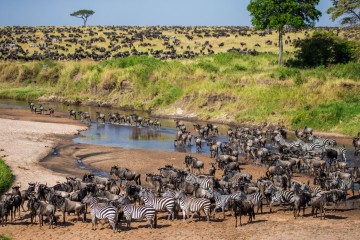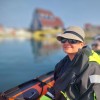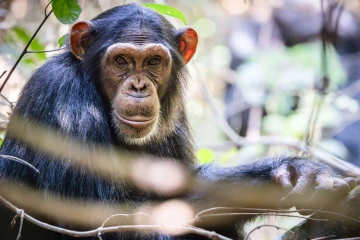When Viva’s Destination Specialist, Tara Sutherland, set off on a Tanzania Northern Circuit safari, her expectations were high. Though she has travelled extensively all over the world, this would be her time staying in luxury tented safari camps and lodges in Tanzania’s north—an area that boasts some of East Africa's most famous highlights, including the Serengeti, Ngorongoro Crater, Tarangire, and Lake Manyara.
The tour delivered on every single point. According to Tara and everyone else who has visited, this is not the kind of region that could ever disappoint.
“Whether on your first Tanzania safari or your third, you’ll be impressed by the Northern Circuit. It offers a fantastic range of landscapes all in one region, from volcanic and mountainous to one of the largest flat plains I have ever seen." - Tara
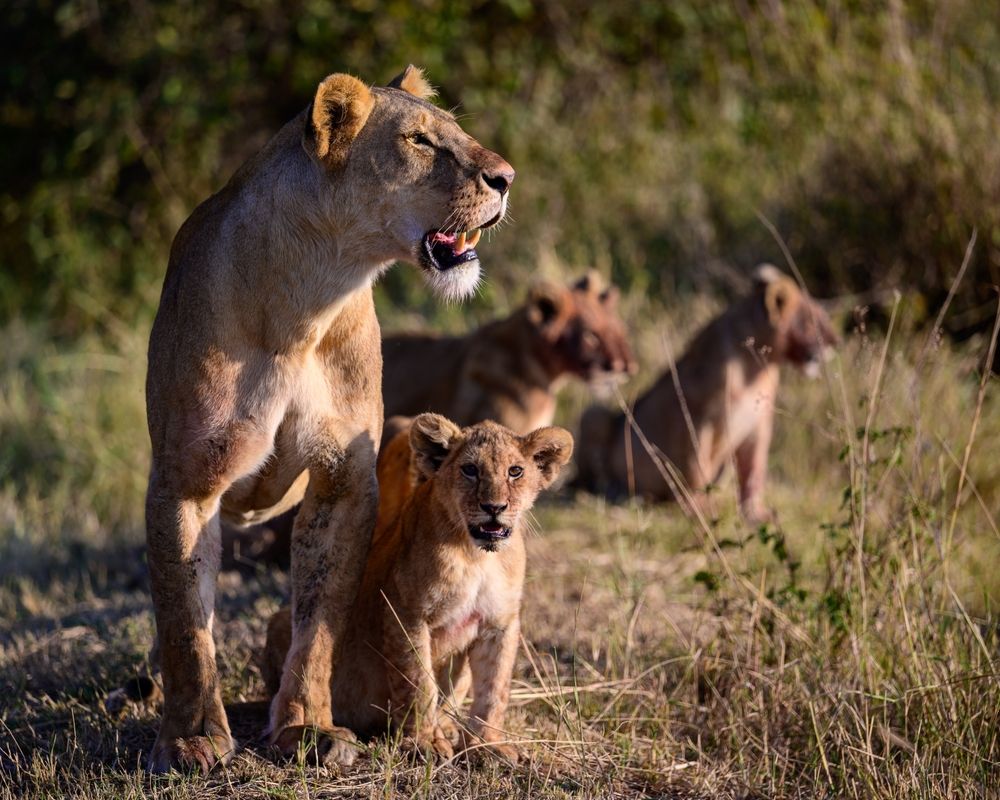
A lioness leads her cubs across the Serengeti, showing them the way through the wild.
We’ll detail all about Tara’s unforgettable adventure, which she took just before the start of the high travel season in East Africa. Our comprehensive overview details what to expect on this kind of itinerary and how to make the most of your Tanzania safari. Ultimately, it'll show you why the Tanzania Northern Circuit should top your travel bucket list!
> Read more about what to wear on safari
The Trip at a Glance
Destination: Tanzania’s Northern Circuit, including Serengeti, Ngorongoro Crater, Tarangire, and Lake Manyara National Parks.
Time of year: May
Unique Highlights: Witnessing the Great Migration, a rare spotting of a serval cat, and going on a hot air balloon safari over the Serengeti.
Overall Recommendation: The northern circuit offers an unmatched mix of luxury, adventure, and wildlife. The concentration of highlights is incredible, so it is also one of Africa's most visited regions. If you can, and don't mind putting up with some rain and muddy trails, visit in the off-season. Not only is it quieter but you also get to see the normally parched landscapes absolutely blooming with wildflowers.
Tara’s Favorite Experience:
“Floating above the Serengeti at sunrise in a hot air balloon, with the plains awakening below me, was pure magic.” - Tara.
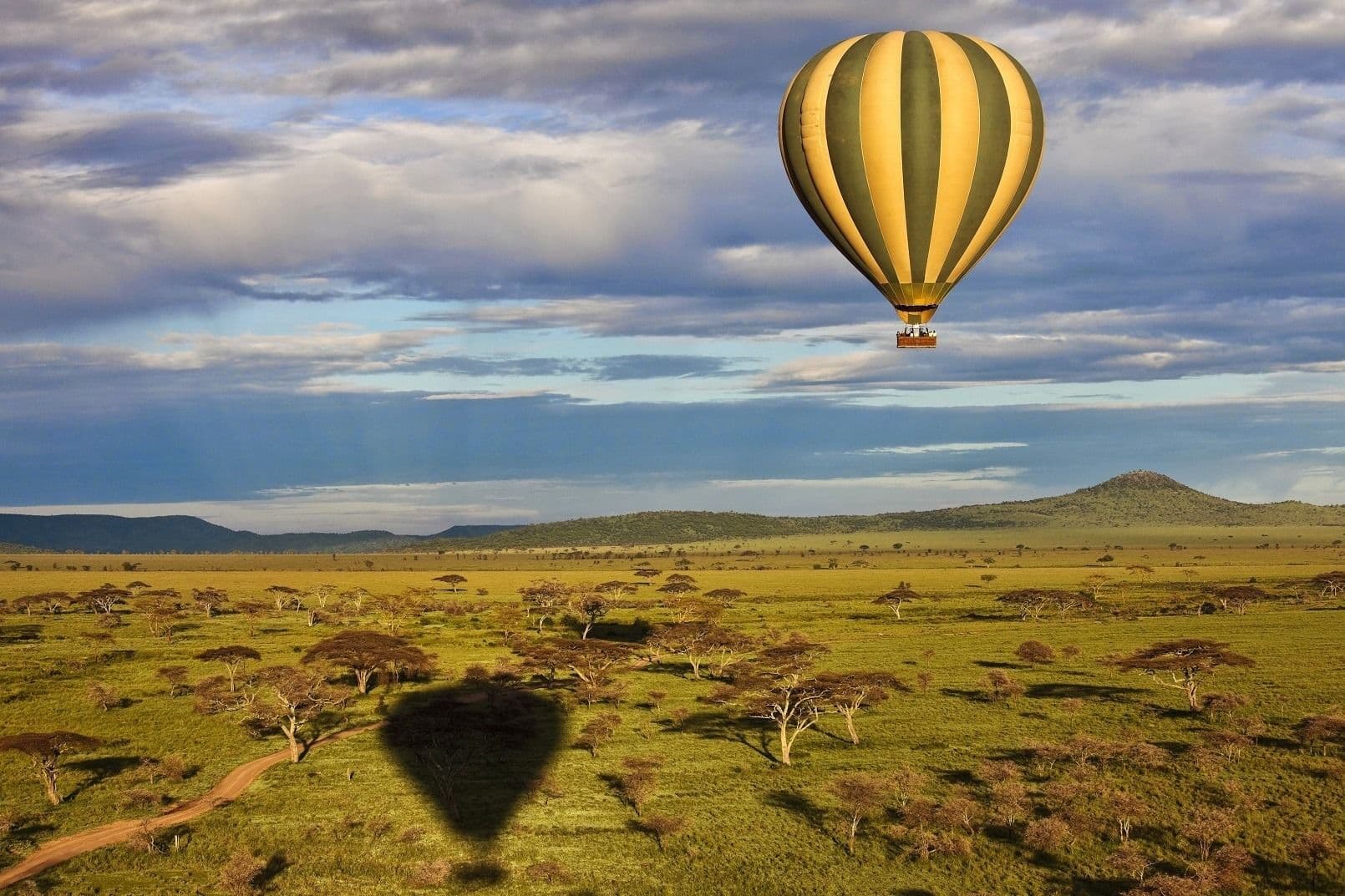
Hot air ballooning in the Serengeti is one of Africa’s top bucket-list activities and an experience one never forgets. It’s surprisingly quiet so animals don’t even know you are right above them. Extraordinary!
About Northern Tanzania - What to Expect
Northern Tanzania boasts outstanding geographic contrasts. You can see vast open plains, rugged volcanic landscapes, and dense forests, all in a week. The Serengeti's seemingly endless savanna stretches out in every direction, setting the perfect stage for the Great Wildebeest Migration. These sun-scorched plains are interrupted by rocky outcrops, known as kopjes, which shelter predators like lions and leopards.
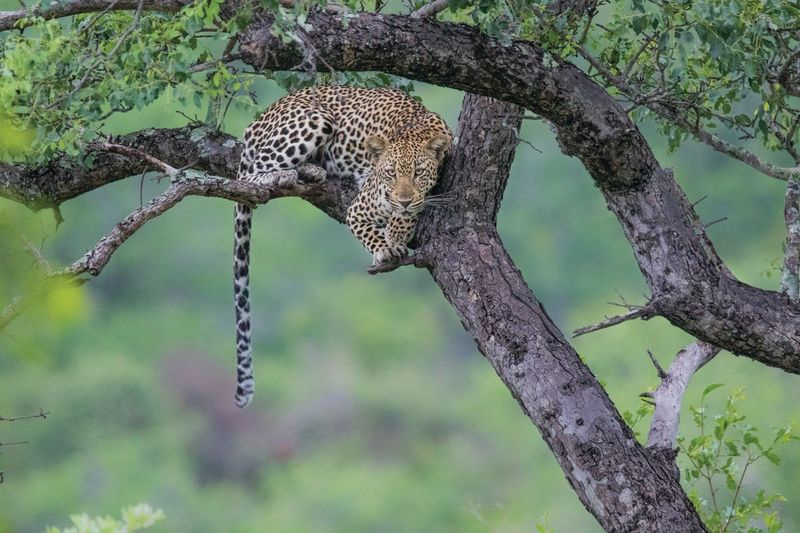
High above the Serengeti, a leopard rests — watching, waiting, always in control.
In contrast, the lush Ngorongoro Crater, a collapsed volcanic caldera, is a literal self-contained ecosystem teeming with life—from flamingos in its central lake to grazing herds across its grasslands. Tarangire injects another layer of biodiversity with its iconic baobab-dotted landscapes and seasonal wetlands, while Lake Manyara offers a more intimate safari experience with its glistening lake, forests, and dramatic Rift Valley escarpment.
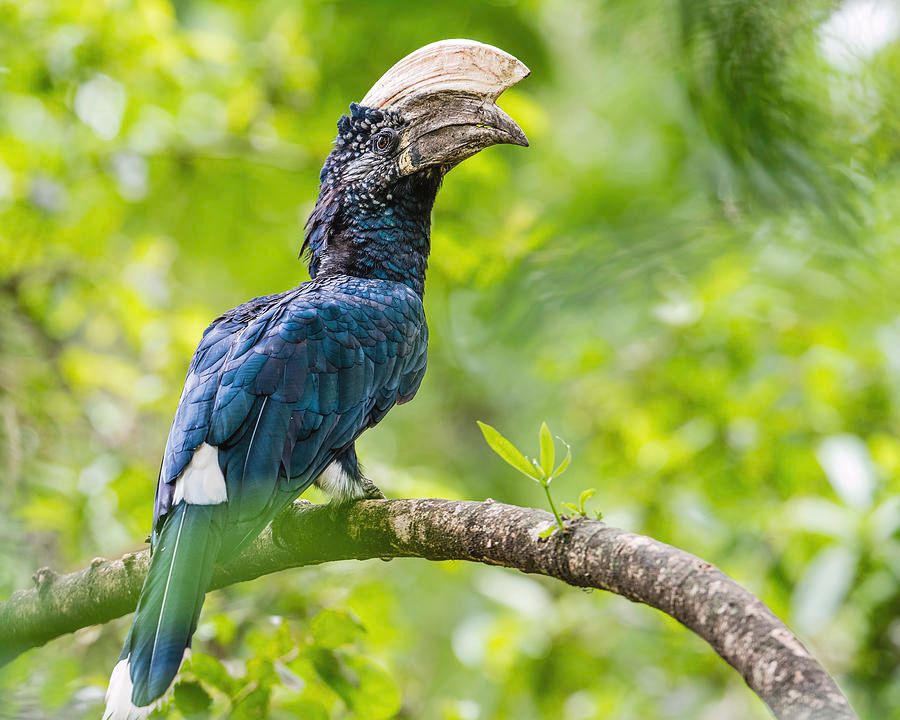
A silery-cheeked hornbill in Lake Manyara - the reserve is an avid bird-watcher’s utopia.
How does it differ from the South?
The geography, wildlife density, and variety of the north set it apart from Tanzania’s Southern Circuit (read Danielle's report about her trip to that region right here).
While the south boasts remote and less-crowded wilderness areas like Ruaha and Nyerere national parks, the north offers easier access between reserves and more diverse ecosystems packed into a smaller area. It's also distinct from its neighbours: Kenya's Maasai Mara shares the Serengeti's ecosystem but doesn't have the dramatic volcanic features of Ngorongoro, Uganda’s luscious highland forests are more suited to gorilla trekking, and Rwanda's dense forests couldn't be more different from the Serengeti's open plains.
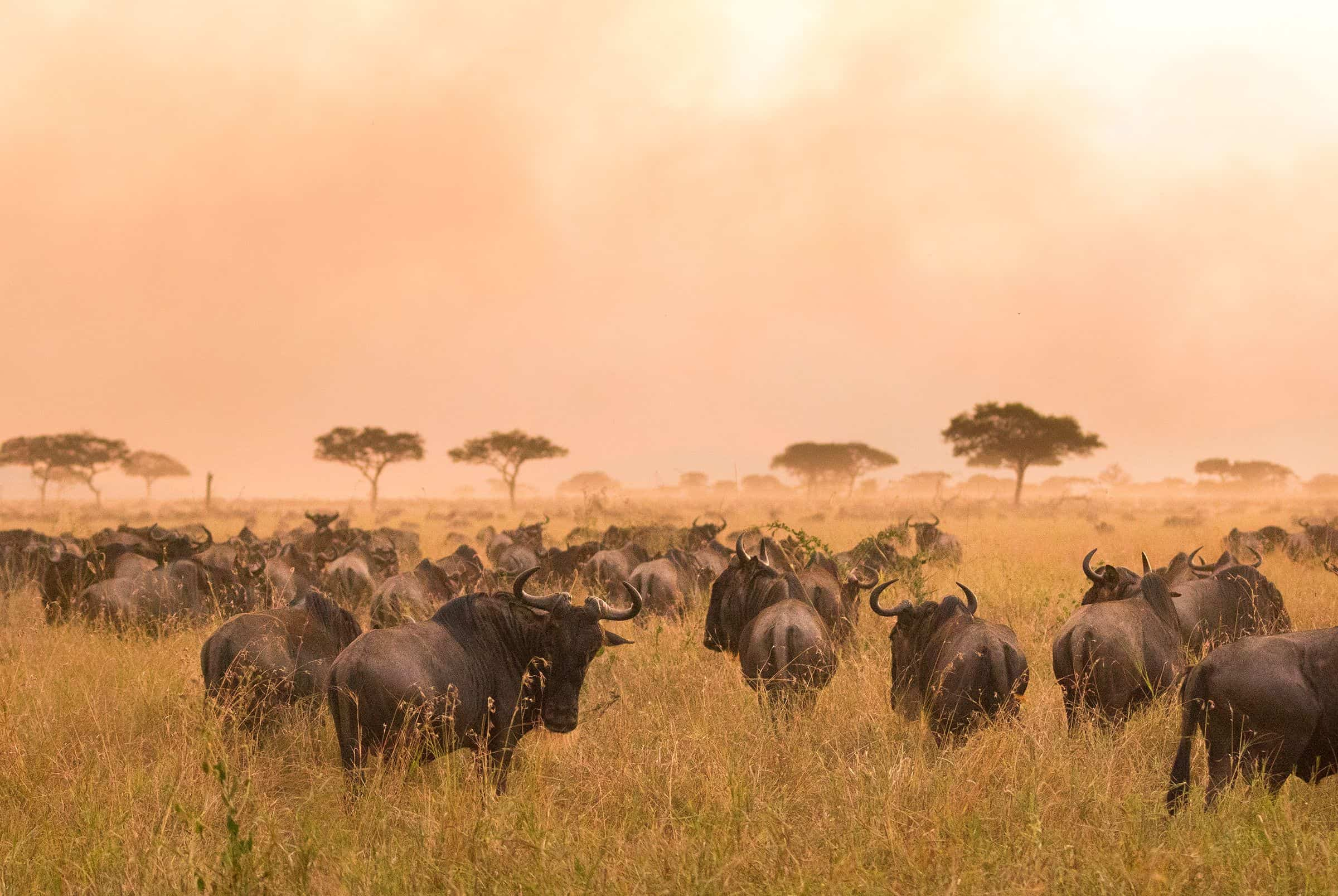
The wide-open expanses of the Serengeti are a real sight to behold.
Tanzania Northern Circuit Highlights
The Journey Begins in Arusha
Most travellers flying into Tanzania's northern circuit land at Kilimanjaro International Airport near the city of Arusha. Arusha is a popular gateway to East Africa safaris and a bustling town with a charming local vibe.
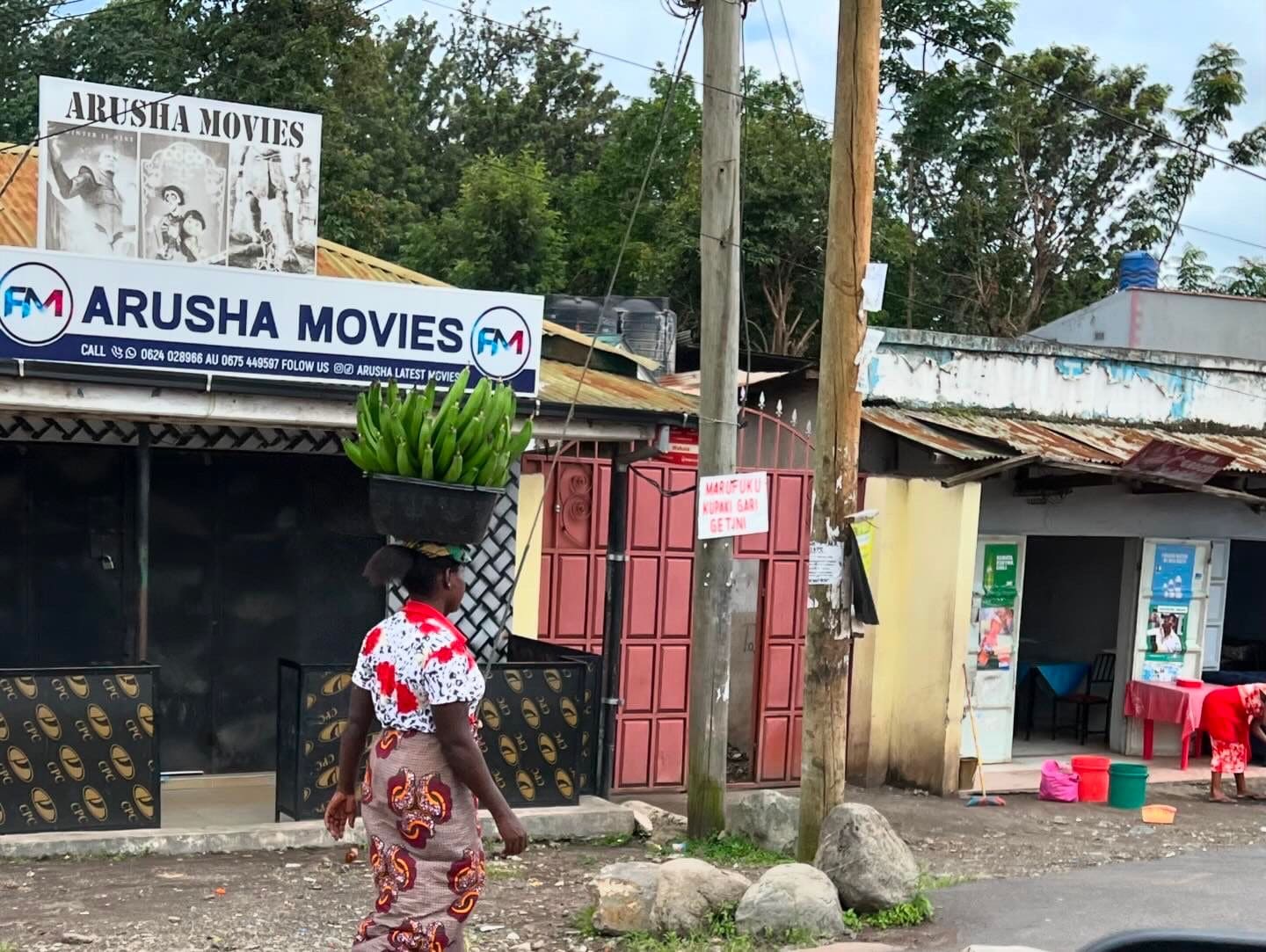
Arusha — a vibrant town nestled at the foot of Mount Meru, and the gateway to Tanzania’s legendary northern safari circuit
After a long flight from New Zealand, Tara stayed a night in Arusha to recharge. "Taking a day to adjust made all the early safari starts so much easier," she shared. Early starts quickly become a part of everyday life because it is at this cooler time of day when wildlife is most active, so be prepared.
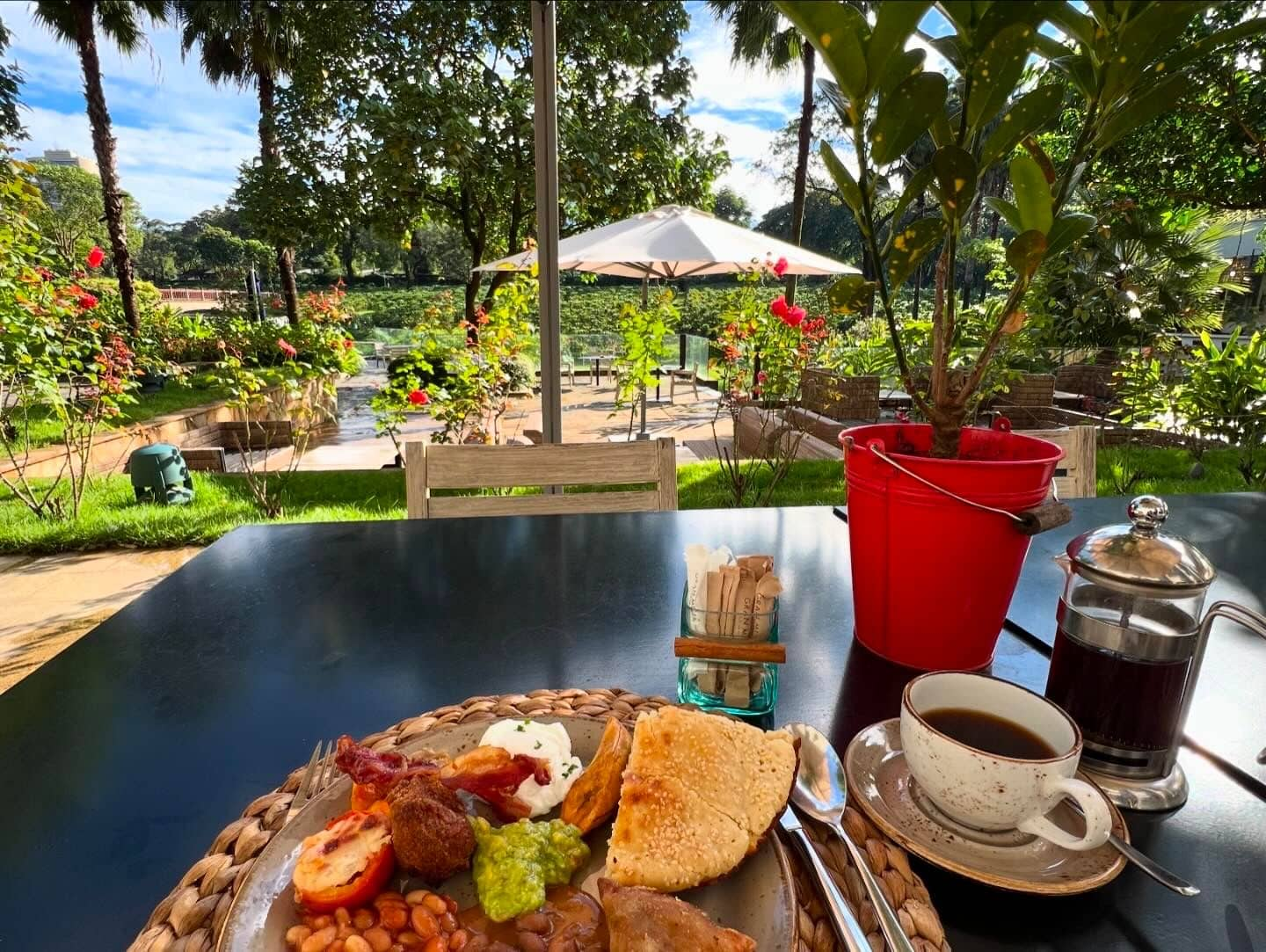
If you can, plan an extra day to get over the flight and jetlag in a lovely Arusha hotel.
The accommodation: Tara stayed at the Gran Melia Arusha and can highly recommend this luxury hotel. It has impeccable service, a rooftop restaurant with grand vistas, lush tropical gardens, its own mini coffee plantation, and (Tara's personal favourite) a lovely pool. Soaking travel-weary feet in the cool water is blissful!

Her tip? Request a Mount Meru View room. “Waking up to that incredible mountain framed by lush gardens was unforgettable.”
Tarangire National Park - Tanzania’s Quiet Achiever
Tarangire is a fantastic safari springboard and is most famous for its massive elephant herds and ancient baobabs. Tara’s first sighting, however, was of a cheetah and her cub.
Within minutes of arriving, Tara’s guide pointed out a cheetah and her cubs resting on a mound. "It was such a thrilling start to the trip," Tara shares. As they explored the park further, Tara’s group spotted troops of baboons and could spend time watching their antics. They saw giraffes grazing, an abundance of incredible bird life, and more elephants than they could count. The park, by all accounts, more than lives up to its reputation.
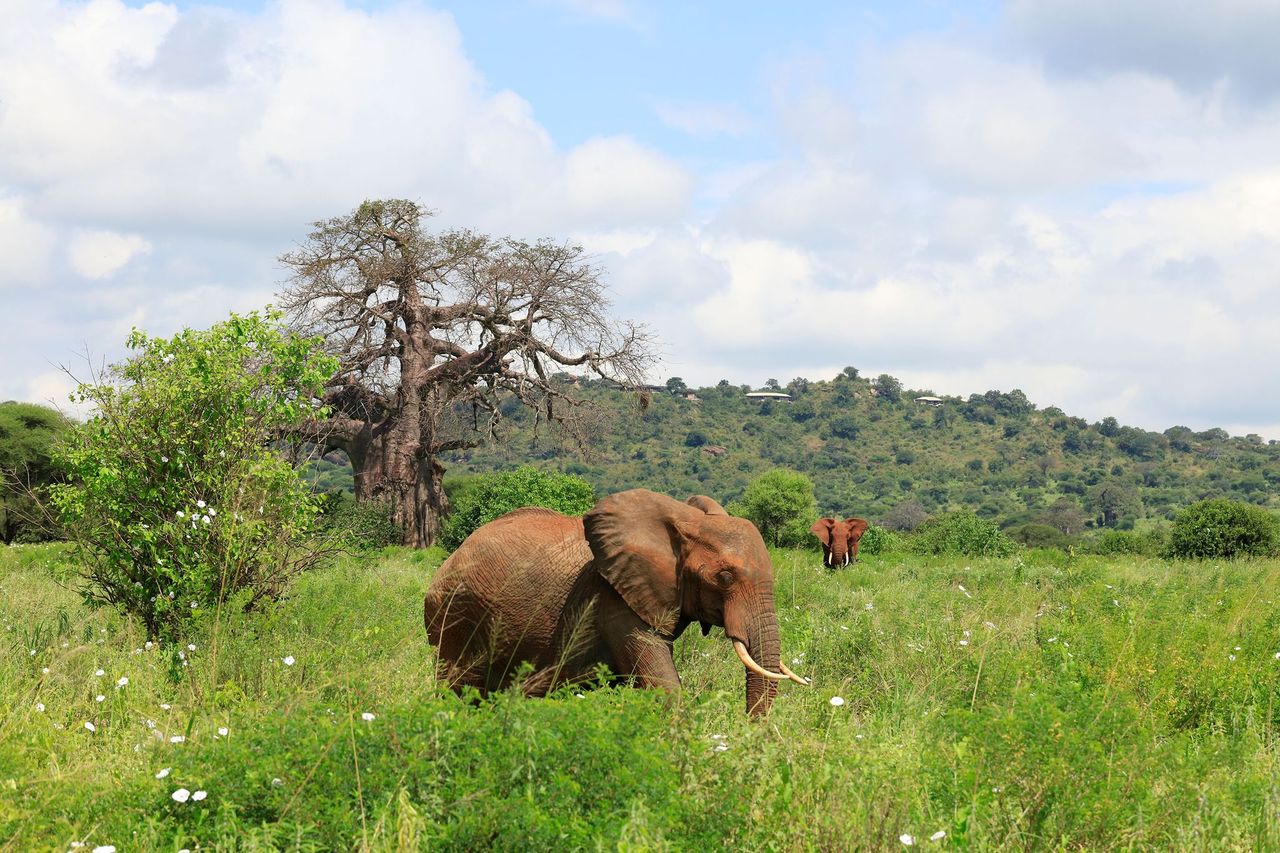
Tarangire is a quieter gem on the northern circuit. It has phenomenal wildlife density and is only about a quarter of the size of the Serengeti, so you spend more time just watching animals than driving. It's perfect for travellers seeking a more secluded and relaxed safari experience.
The accommodation: For her overnight stay in the park, Tara enjoyed her first foray into luxury-tended accommodation at the Tarangire Kuro Treetops Lodge. “Waking up to the sounds of nature and sipping coffee on my veranda as the sun rose was a trip highlight." We guess we can consider Tara a glamping convert now.
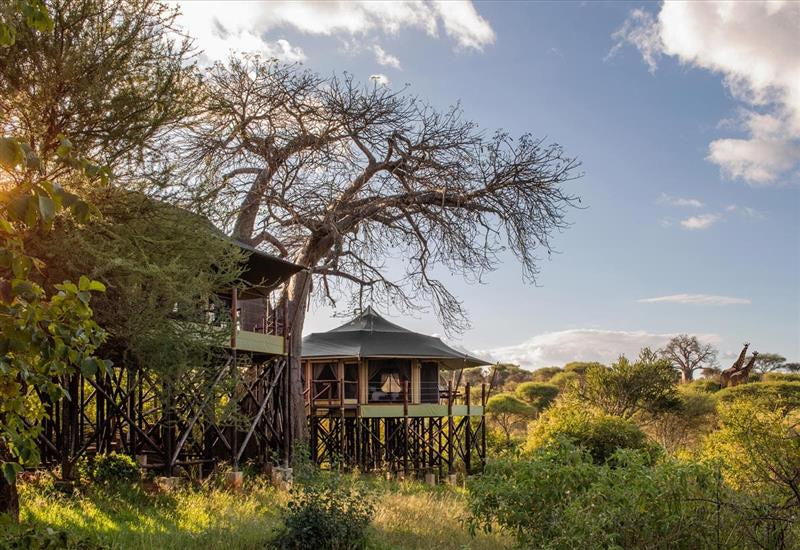
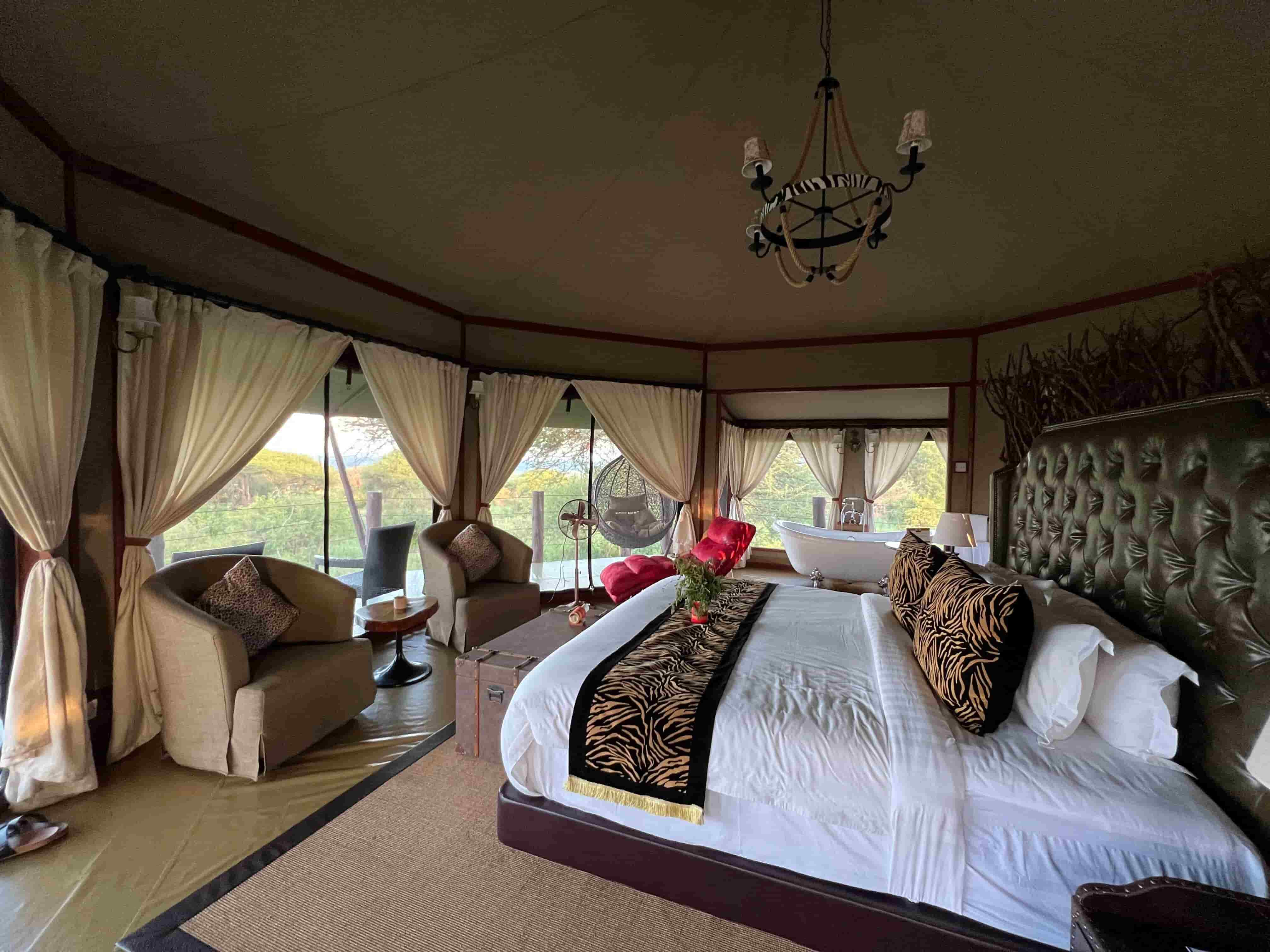
Yes, it’s a tough job, but someone has to review these places!
Ngorongoro Crater - Africa’s Garden of Eden
The next stop on the tour was Ngorongoro Crater, a UNESCO World Heritage site and one of Africa’s most famous natural wonders. Dubbed the "Garden of Eden" due to its incredibly high concentration of wildlife, the crater is home to a variety of animals, including the famous "Big Five" (lions, leopards, elephants, buffaloes, and rhinos). Remarkably, it also has one of the highest densities of predators in Africa, so it’s a very unique and dynamic ecosystem. Lion hunts in the crater are legendary.
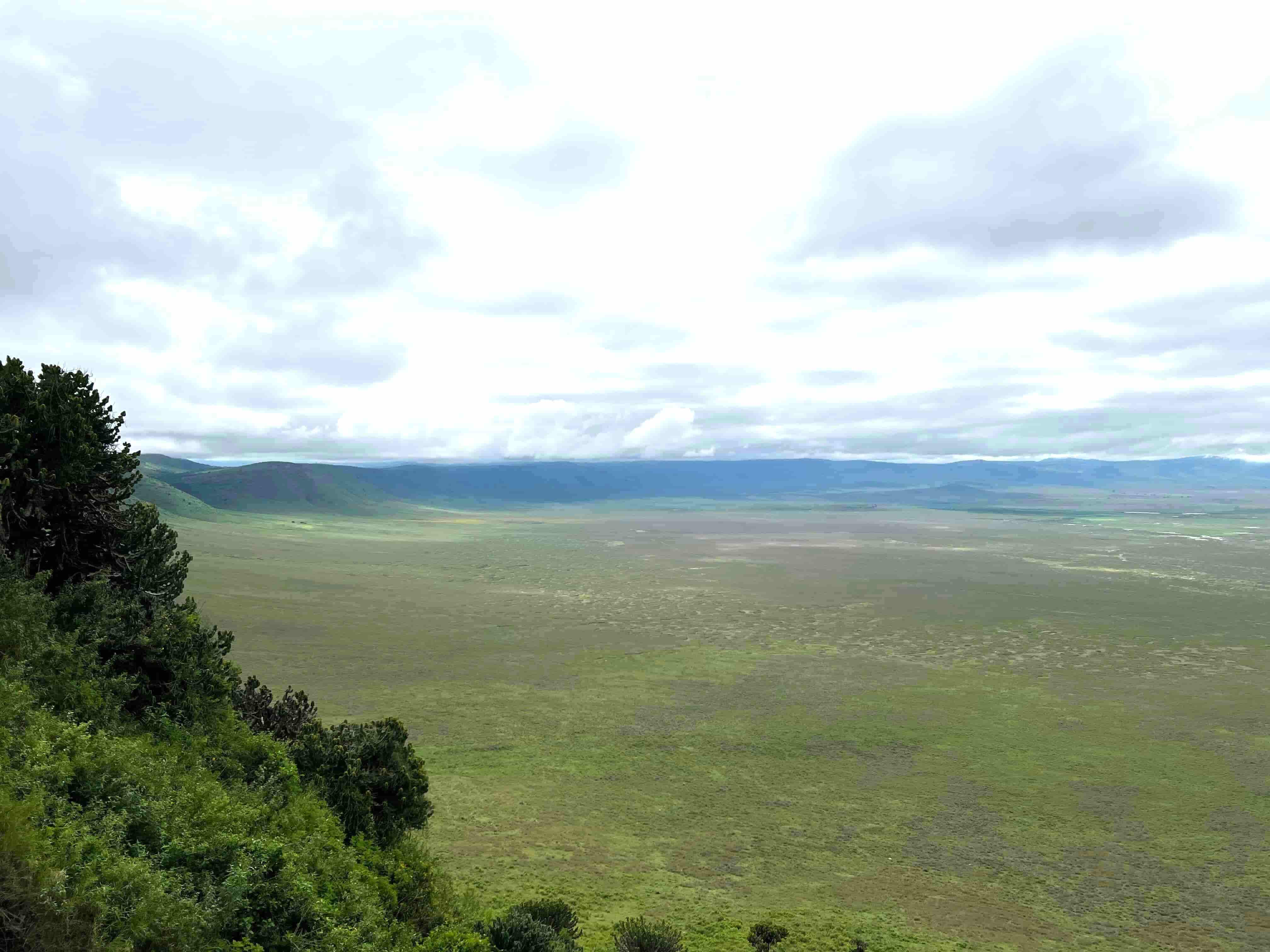
The scenery in Ngorongoro is spectacular and starkly contrasts the flat open plains one normally associates with Africa.
Tara describes her descent into the crater as unforgettable. "It felt like stepping into another world. The view from the rim is breathtaking, but being on the crater floor surrounded by so much wildlife is even better."
The group spotted wildebeest and zebras in vast numbers stretching as far as the eye could see, watched warthogs rolling in the dust, and even had a lion stroll alongside their vehicle. What impressed them most was the sheer size of Ngorongoro – a lake within the caldera, yet so many areas to explore on safari, including a small forest.
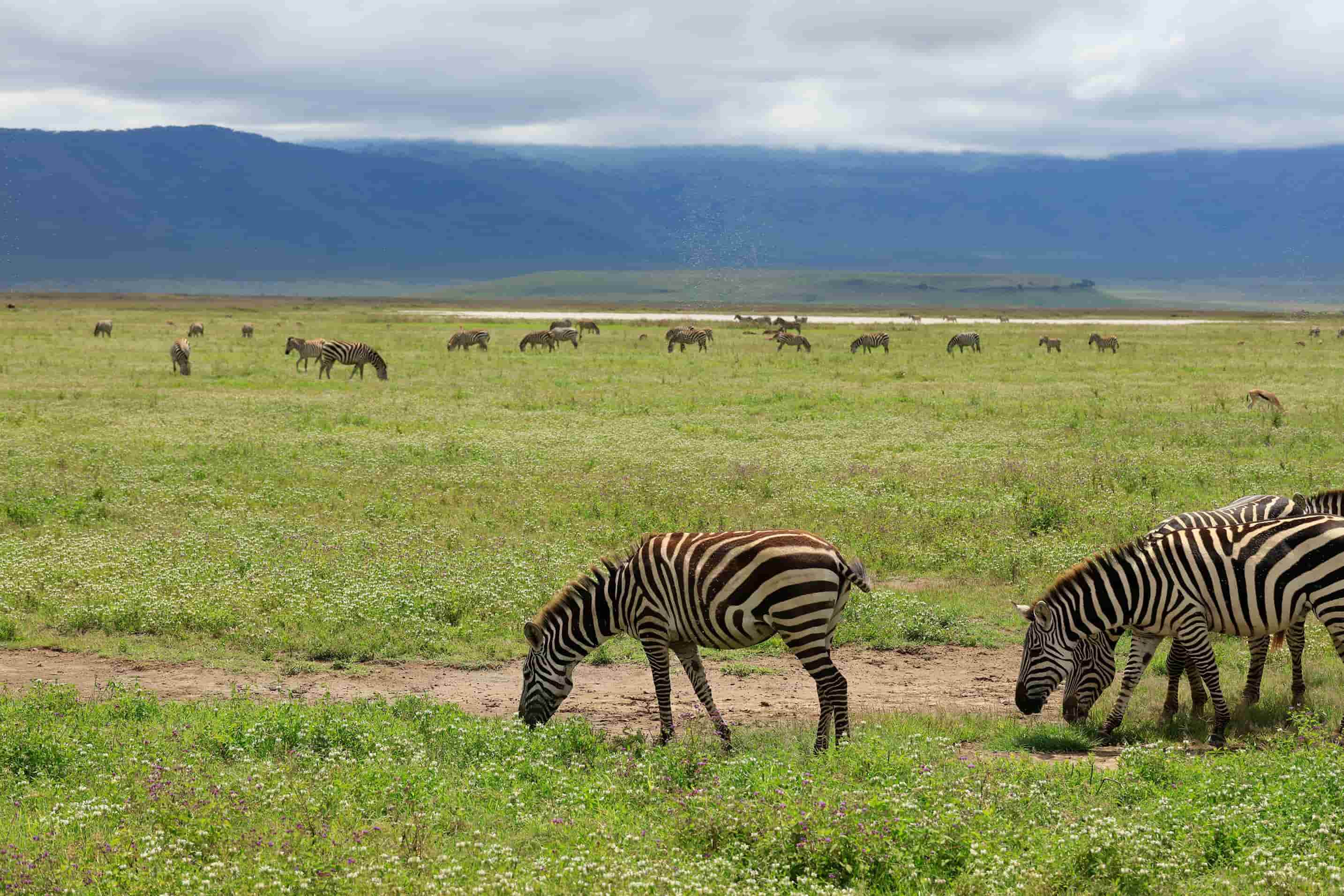
Wildlife on full display inside Ngorongoro Crater.
Fun Fact: One of Ngorongoro's biggest quirks is that its crater walls are so steep and tall that giraffes cannot climb them, leaving them in complete isolation.
“Ngorongoro Caldera does get busy, especially in high season (there were a lot fewer vehicles when I went in May), but there is a reason – where else in the world can you take a safari vehicle down the steep slopes inside a volcanic pit to spot the big 5?!” - Tara.
The accommodation: Tara stayed at the Ngorongoro O'ldeani Mountain Lodge; her overnight was as memorable as the wildlife viewing. Nestled in beautifully manicured gardens, the retreat offers a wonderful respite after the excitement of a day on safari, and a great lounge area to have a gin at the bar.

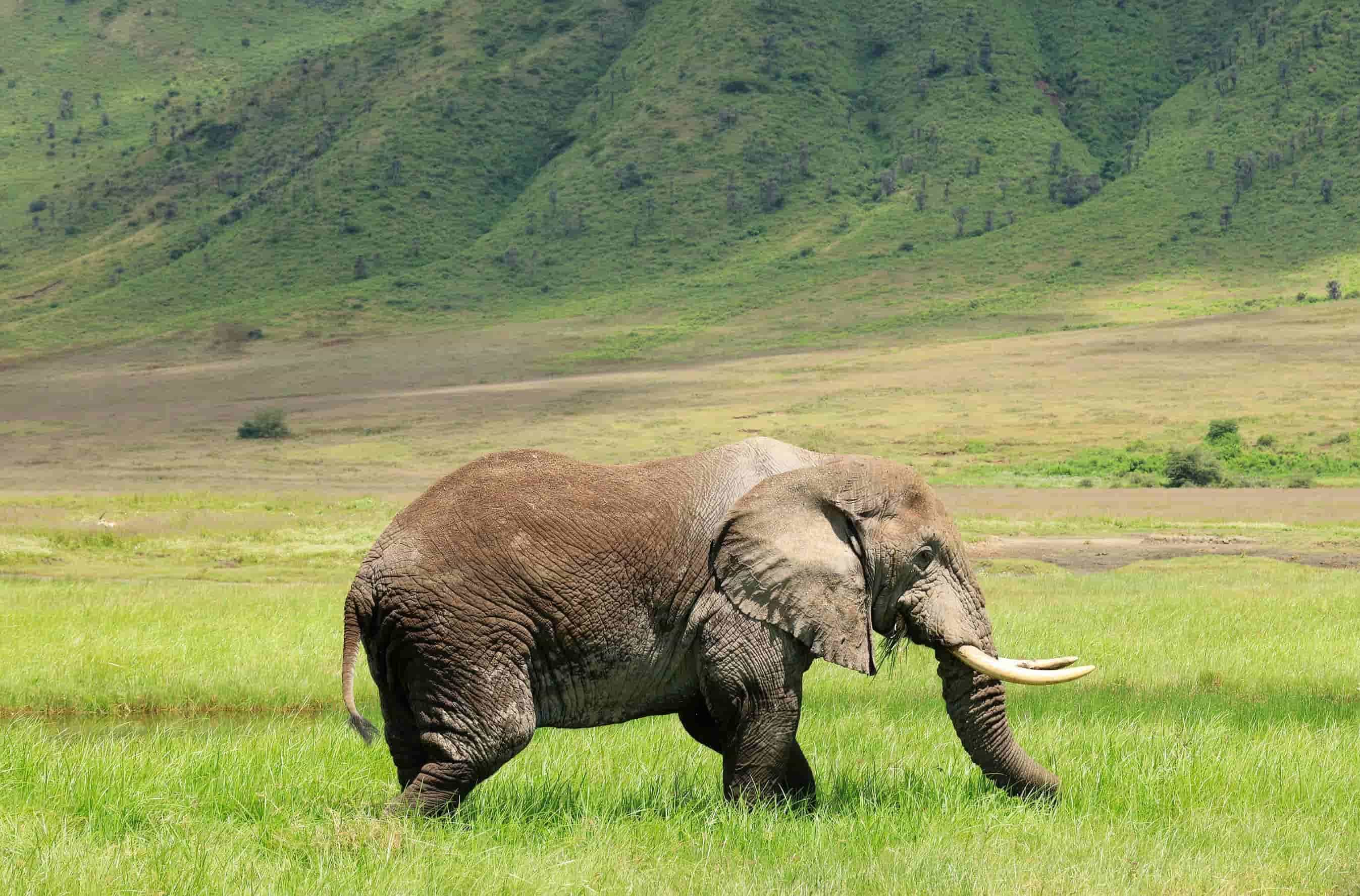
Spot the Big Five inside Ngorongoro’s volcanic caldera — visit in peak season for the highest chance to witness Africa’s most iconic wildlife up close.
“Ngorongoro Caldera does get busy, especially in high season (there were a lot fewer vehicles when I went in May), but there is a reason – where else in the world can you take a safari vehicle down the steep slopes inside a volcanic caldera to spot the big 5?!” - Tara.
The accommodation: Tara stayed at the Ngorongoro O'ldeani Mountain Lodge; her overnight was as memorable as the wildlife viewing. Nestled in beautifully manicured gardens, the retreat offers a wonderful respite after the excitement of a day on safari, and a great lounge area to have a gin at the bar.
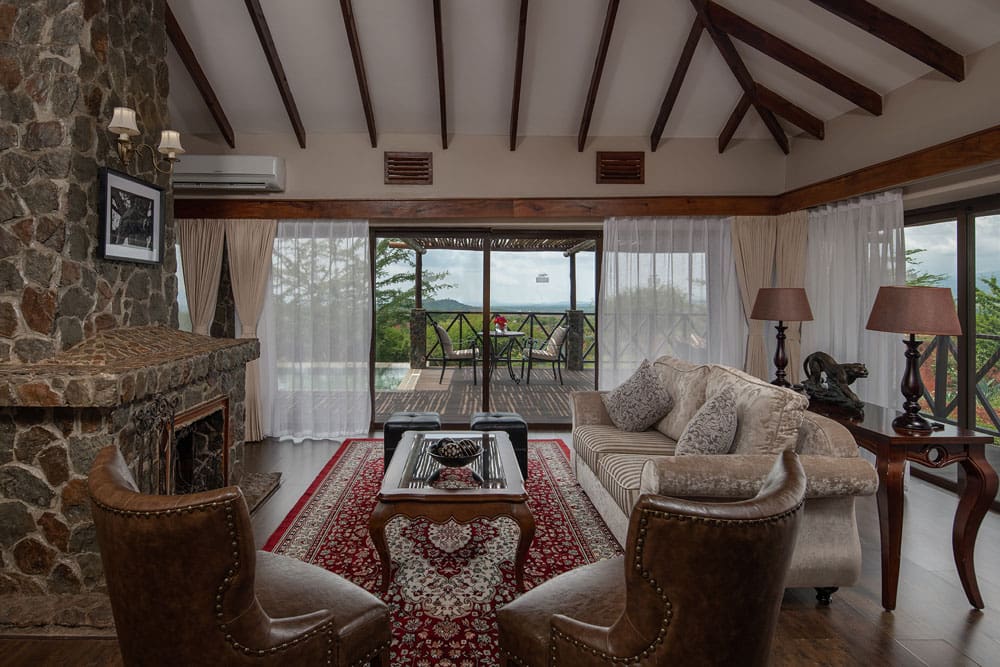
O’ldeani Mountain Lodge features comfortable accommodations, a restaurant serving local flavors, and panoramic views of the crater rim.
Serengeti National Park - The Most Iconic Tanzania Safari Destination
No trip to Tanzania's northern circuit is complete without a visit to the Serengeti, and the star reserve delivered on its reputation as a safari paradise. Tara's highlights included witnessing the Great Migration, spotting an elusive serval cat (a rare sight) and marvelling at the interplay between predators and prey. A dramatic thunderstorm painted the landscape in vibrant hues, a spectacle Tara described as "simultaneously humbling and exhilarating."

Tara had the chance to spot the elusive serval cat during the intense rush of the great migration.
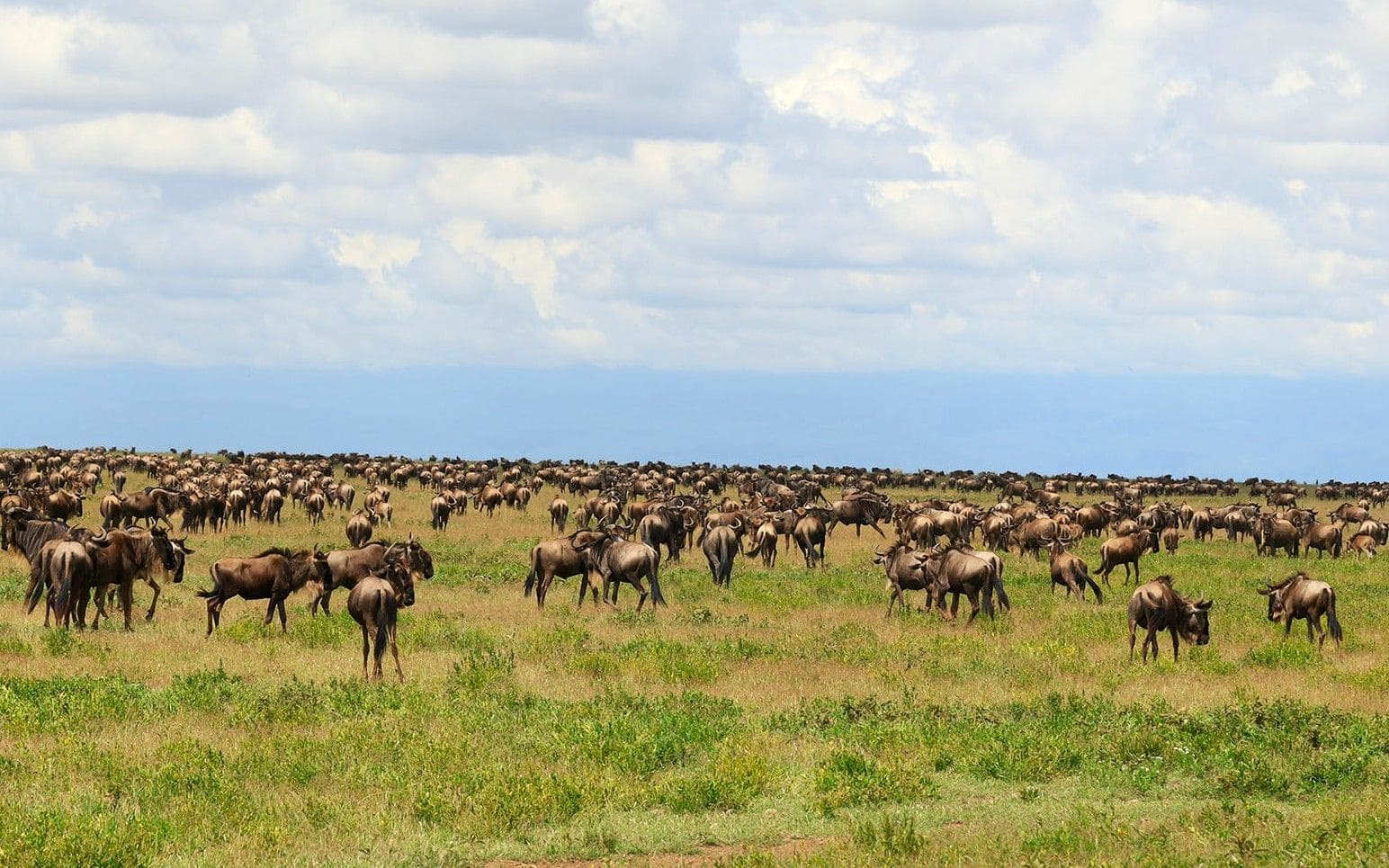
The Serengeti hosts one of the world's largest terrestrial mammal migrations, with over 1.5 million wildebeest and hundreds of thousands of zebras and gazelles migrating across its plains yearly.
Where & When is the Great Migration in the Serengeti?
The 800km-long Great Migration in the Serengeti typically occurs year-round but follows a general pattern:
January to March: The herds are usually in the southern Serengeti and Ngorongoro Conservation Area, where they calve, with many wildebeest giving birth.
April to May: As the dry season approaches, the herds start moving northward, following the rains and fresh grazing areas.
June to July: The herds begin crossing the Grumeti River, navigating through dangerous, crocodile-infested waters.
August to October: This is the peak of the migration, with the herds crossing the Mara River into Kenya's Maasai Mara, where the risk of crossing the river with crocodiles is super high.
November to December: The herds begin their journey back to the southern Serengeti to start the cycle all over again.
The migration is influenced by rainfall patterns (that feed the nutritious grass), so timing can vary from year to year.
|
The accommodation: Tara spent three nights at the Ole Serai Turner Springs, an unfenced camp with unparalleled wildlife proximity.
Tara especially loved the well appointed luxury tents surround by nature and warm Tanzanian hospitality, praising the camp's boma dinner experience. "Gathering around a fire under the starry sky, sharing stories, and enjoying Tanzanian cuisine was the perfect way to end the day."

Sundowners at Ole Serai Camp, Serengeti.
Tara’s insider tip for your Serengeti visit?
Book a hot air balloon safari. Tara’s flight over the Serengeti at sunrise was the pinnacle of her trip. “Floating silently above the plains as the animals stirred below was worth every penny.” All of us at Viva who've been lucky enough to enjoy the experience wholeheartedly agree - do it once, and it'll become one of the best nature experiences of your entire life.
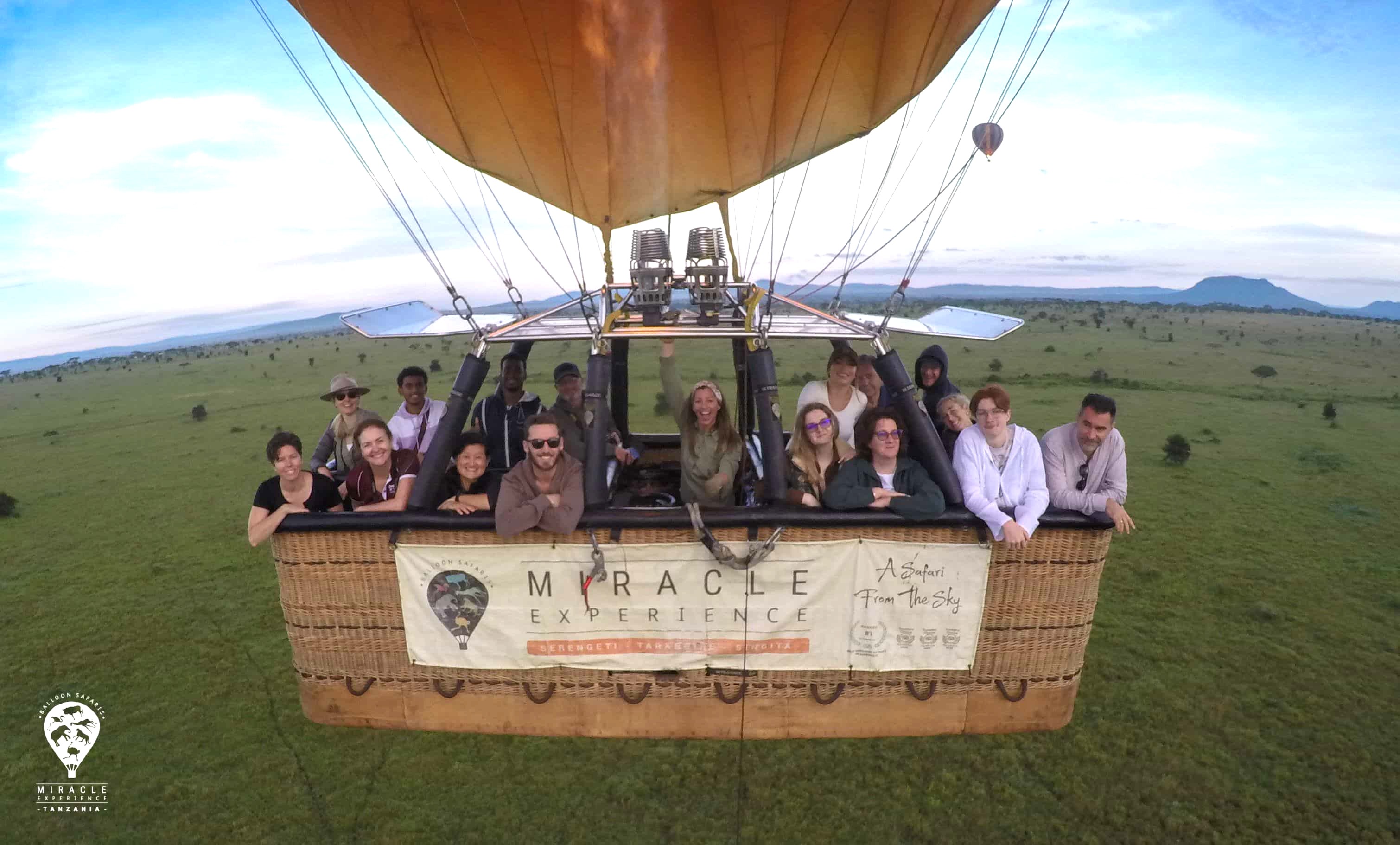
Tara, on the far front left, rates the balloon experience at the Serengeti as among the most unforgettable travel experiences she’s ever had.
Lake Manyara National Park
Tara's tour wrapped up at Lake Manyara, a park renowned for its biodiversity and, in particular, its abundance of birdlife. The group enjoyed exceptional sightings here, including a leopard resting close to their vehicle. This is despite the fact that flooding restricted the routes they could explore—there was still so much land to explore.
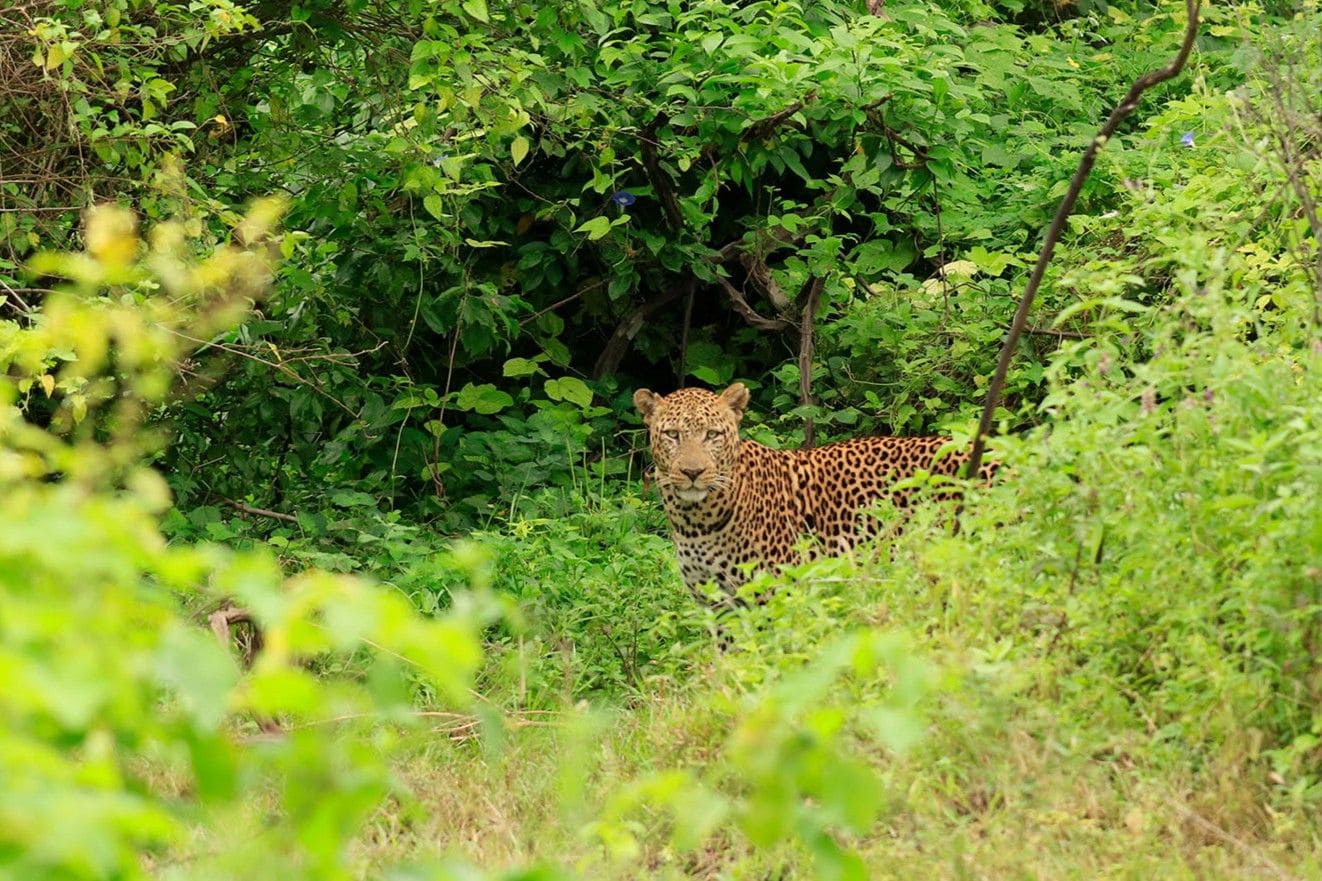
Leopard spotted during a game drive.
Lake Manyara offers quite the contrast to the northern circuit’s larger parks, with its dense groundwater forests and shimmering lake. It’s an ideal destination for bird enthusiasts, with over 400 species thriving here, including flamingos, pelicans, and kingfishers. During the wet season, the concentration of flamingos is a jaw-dropping visual spectacle. The lake is alkaline and rich in nutrients, plus it lies at the base of the Great Rift Valley, so its volcanic landscapes are inherently fertile.
A birding buffet like no other!
The park surrounding Lake Manyara is known for its tree-climbing lions, a rare and fascinating behaviour rarely seen in other parts of Africa. These lions climb acacia trees to escape the heat and to get a better view of their surroundings as one does.
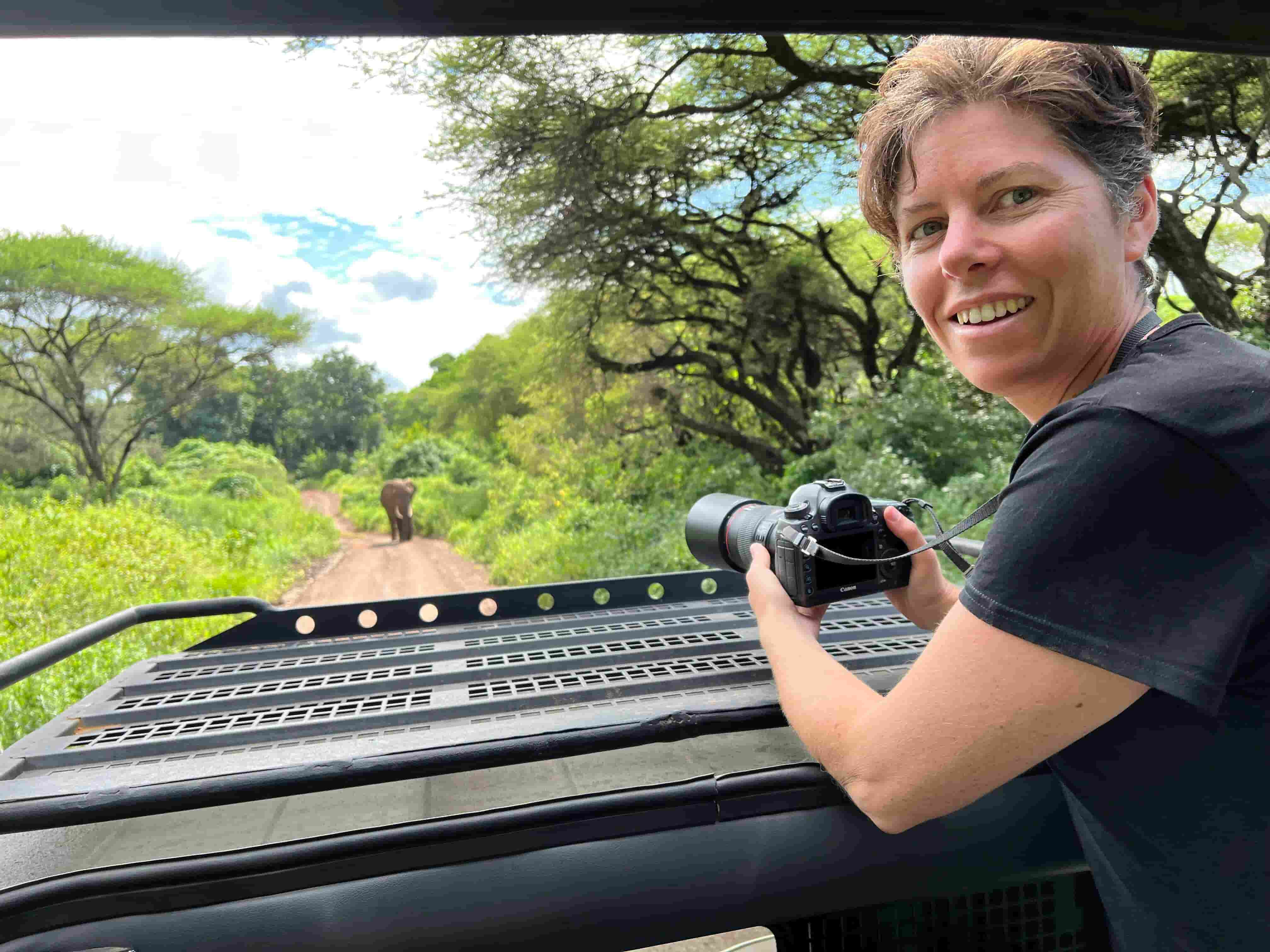
Tara capturing an elephant during an exciting game drive.
The accommodation: Tara stayed at Lake Manyara Kilimamoja Lodge, where her room’s outdoor shower and swing chair provided the perfect spot to unwind. “Watching the sun rise over the Rift Valley from my balcony is a memory I’ll treasure forever.”
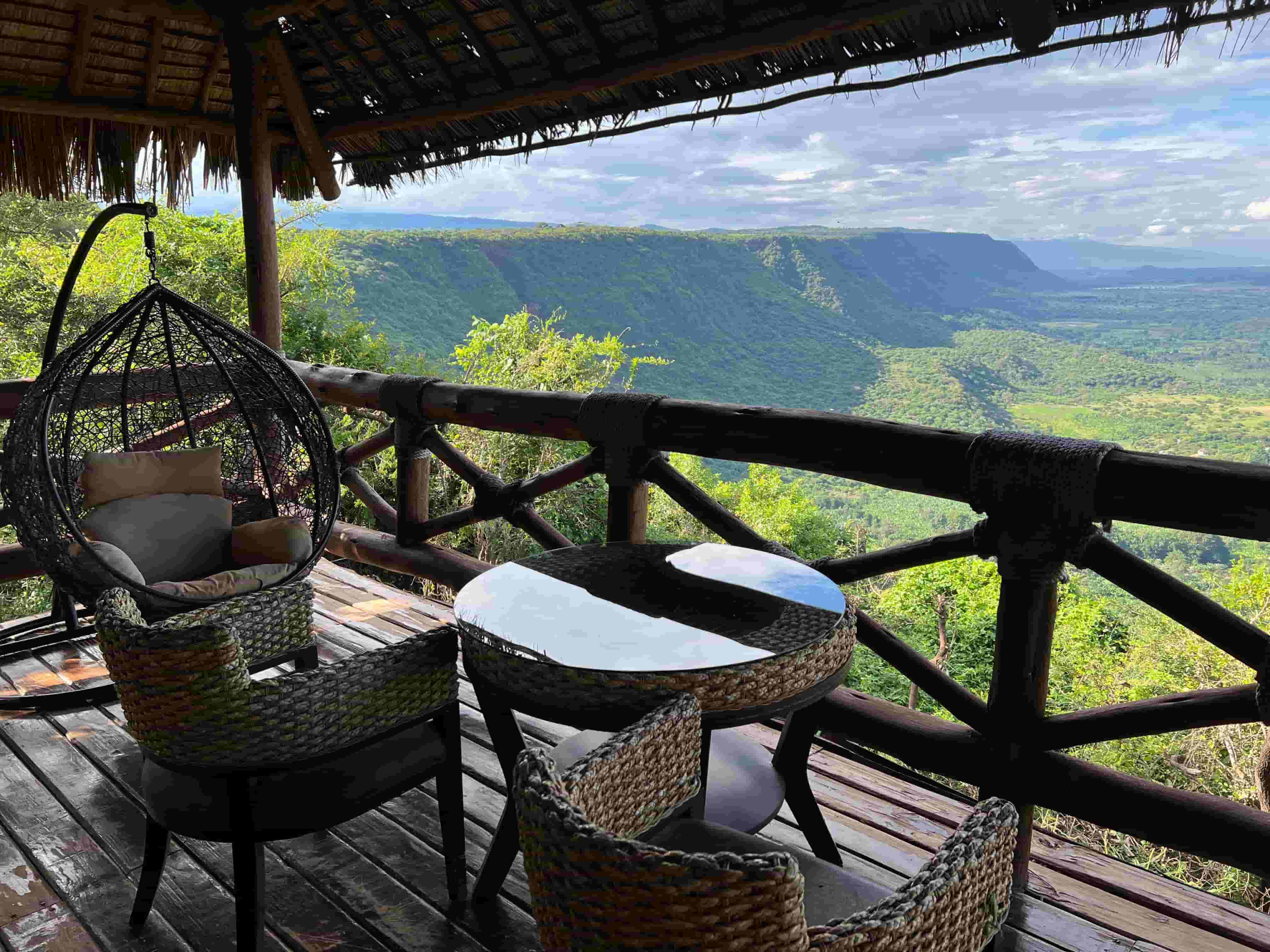
Lake Manyara Kilimamoja Lodge offers luxurious rooms, a spacious viewing deck, and a restaurant with breathtaking crater views.
Why Choose Tanzania’s Northern Circuit?
Tara describes the Tanzania northern circuit as a safari lover's dream and offers so much variety (of animals and landscapes) that it delivers many WOW moments. She made the journey from Ngorongoro to Serengeti twice, each time falling in love with the changing landscapes. From the rolling hills around the crater to the vast, expansive plains of the Serengeti. Along the way, Maasai villages pop up here and there, with locals dressed in traditional attire, going about their day in the fields. This region is a visual feast with few parallels.
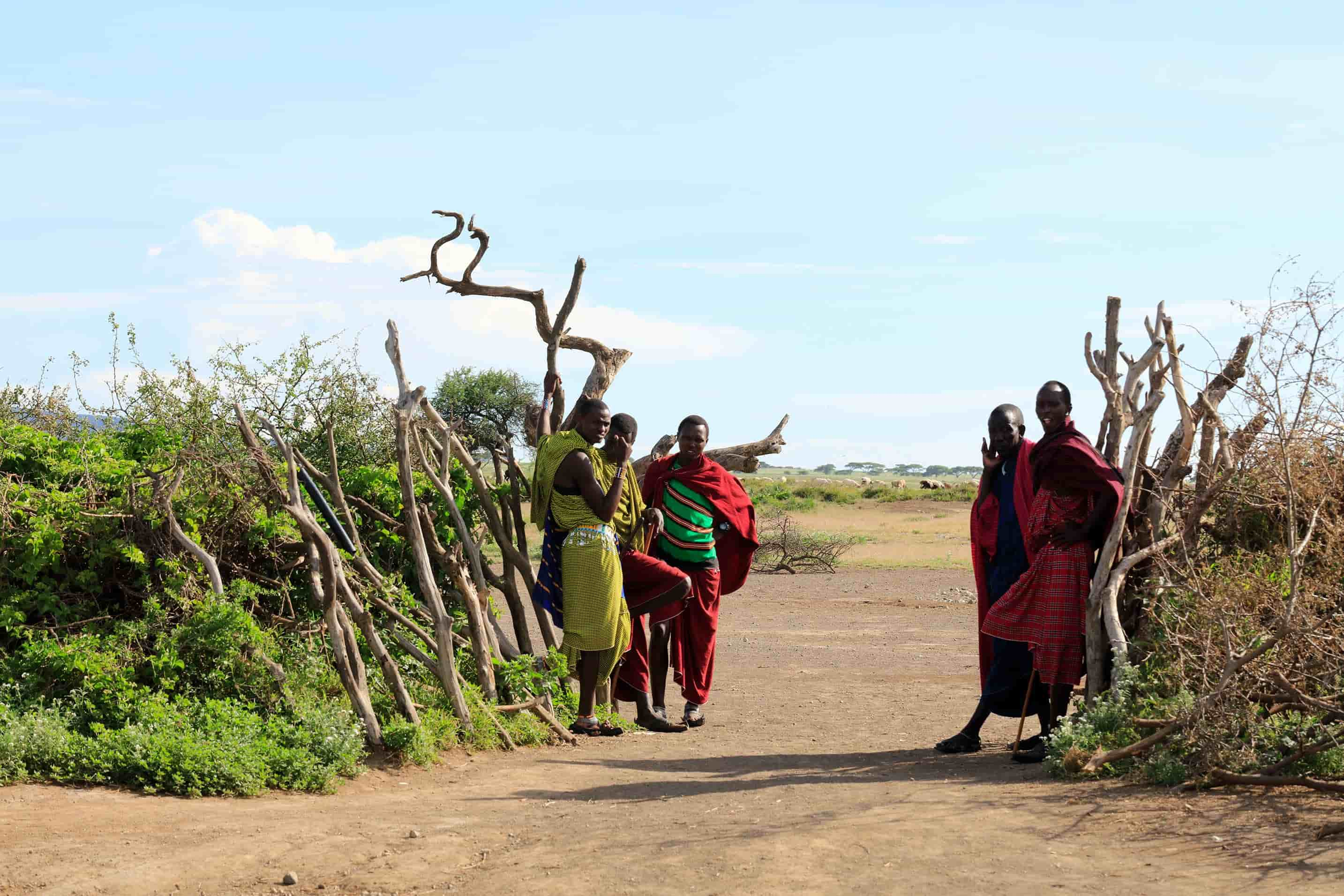
From the beadwork to the shukas, witnessing Maasai culture up close offers an unforgettable glimpse into a community that thrives on tradition and pride.
> Tips for Planning a Multi-country African Safari
When to Visit the Northern Circuit & What to Expect
• June to October: This is peak travel season, ideal for dry-season game viewing, with animals congregating around fewer water sources.
• December to March: Witness the calving season in the Serengeti, when thousands of wildebeest are born. The second-highest peak travel season.
• April to May: Although it’s the rainy season, this is a great time to enjoy fewer crowds, lower prices, and lush landscapes. Low season.
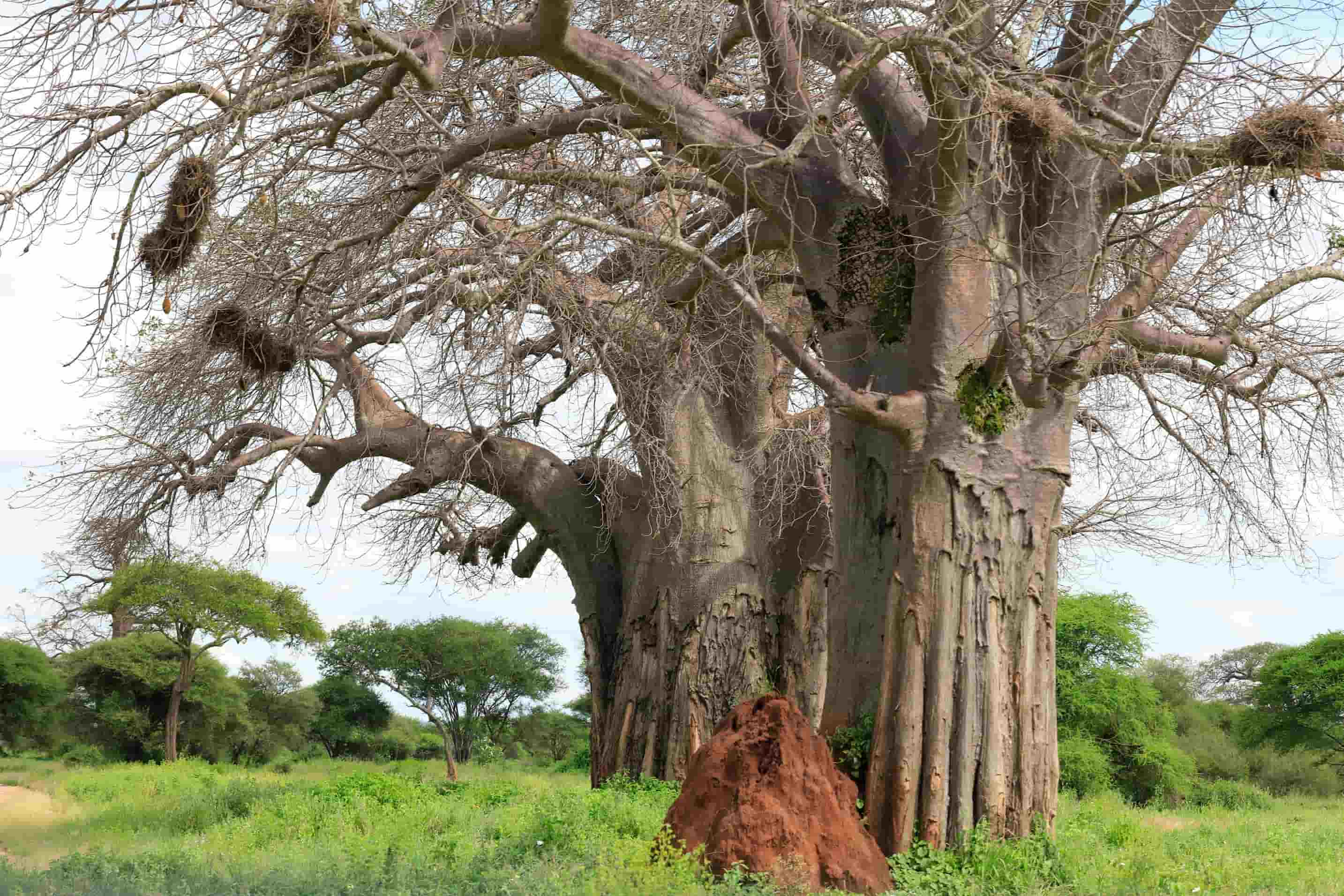
Tanzania’s baobabs — towering symbols of nature’s strength and beauty.
Tara’s 12 Top Tips for Planning a Tanzania Northern Circuit Safari
1. Don't stress: the tour is not physically demanding. This itinerary does not involve much walking, aside from getting in and out of a safari vehicle and walking from your room to the restaurant, swimming pool or bar, so it's suitable for nearly everyone.
2. The minimum age recommendation is 12 and perhaps even a little older. There are long drives sometimes, and overall, the trip is better suited to adults. We have family-friendly Tanzania safari recommendations, though, so feel free to ask us.
3. Add a mix of tented camps and lodges for a variety of experiences and choose the most luxurious option to end the trip.
4. Plan your park visits wisely. For that extra "WOW" factor, consider ending with a highlight like Ngorongoro Crater, and smaller parks like Lake Manyara are best visited earlier in your itinerary.
5. The Northern Circuit covers a vast area, so opt for chartered flights between parks to maximize your time and comfort if your budget allows.
6. Have a specialist plan the full trip for you. Choose between an itinerary designed specifically for you, and your extended family or friends, or join a small group tour. But make sure it is small—on game drives, everyone gets a seat, and the overall experience is much more intimate with just half a dozen in a group.
7. Include special activities like hot air ballooning in your safari tour for a totally unique perspective.
8. Consider visiting during the low season for lush landscapes and fewer tourists; use the saved money to include more days.
9. Pack a good camera and binoculars—you won’t want to miss a single moment!
10. The region has a fantastic curio shopping complex, so be sure to ask your guide to stop if you are keen to take some local arts and crafts home. They'll know where to go.
11. Tara loved travelling in the quieter period but concedes that they couldn’t access all areas due to flooded roads. The long grasses also made it trickier to spot some animals. If you are planning your first-ever Tanzania safari, going in the dry (peak) season may be preferrable.
12. Keep in mind that the sheer concentration of wildlife during the Great Migration is astronomical—don't get stuck on having to visit at the absolute peak time. You'll see wildebeests to the horizon, even in May.
> Tanzania Safari Guide - All You Need to Know
Tara's itinerary was custom-made, although its similar to our Essence of Tanzania Small Group Tour. We offer a range of hotels, lodges, and tented camps , including those Tara stayed in. We will be happy to book them for you or suggest something else to suit your budget and desires.
Enticed to plan your own Tanzania safari on the Northern Circuit?
Contact our Destinations Specialists; they'll help you plan the best itinerary (here or anywhere else in Africa) no matter the time of year you visit.
Laura Pattara
Laura Pattara has guided overland trips across Africa and now focuses her writing on the continent for Viva Expeditions. She once camped beneath a marula tree that an elephant tore apart during the night, yet somehow she still sleeps best in a tent. But make it glam! From sunrise balloon rides over the Serengeti to following the rhythms of wildlife migrations, Laura brings the wild heart of Africa to life with warmth, depth, and the occasional muddy boot.
|
